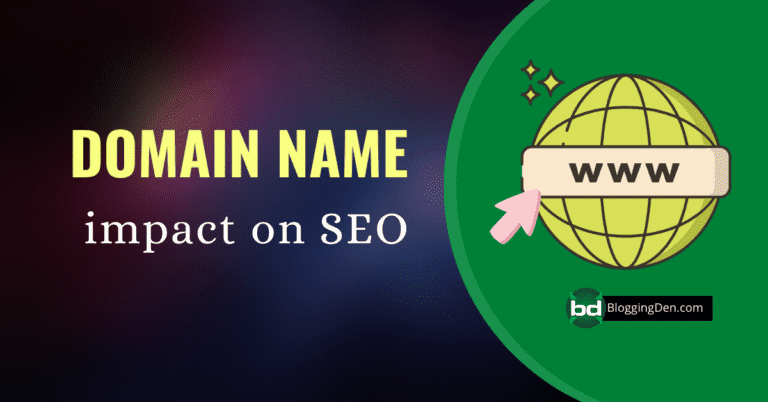Businesses have a massive opportunity to increase their performance by using content marketing.
By providing useful, meaningful content to consumers, you can boost your online credibility, create a community, and develop brand advocates.
Successful content marketing, on the other hand, is more than just producing and selling content. It’s a complete plan for attracting and keeping the attention of a specific target audience group and, in the end, getting a specific return on investment (ROI).
If you follow the steps outlined in the guide below, you’ll have all the details you need to create a great content marketing plan for your company.
Content marketing has evolved significantly over the years. It’s now a mainstream marketing tactic for most online businesses.

You must prepare a strong content marketing strategy for your company when you start your online business or increase sales this year.
Here’s a foolproof guide to content marketing strategies that will perform like magic in 2023.
What is content marketing?
Content marketing is a strategic marketing strategy that focuses on producing and delivering useful, appropriate, and reliable content to attract and maintain a specific audience—and, eventually, to drive profitable consumer action.
You don’t try to sell your products or services to your prospects and clients; instead, you give them content that helps them solve their problems.
What is the importance of Content marketing?
Content marketing is a way to attract and grow a specific group of customers with the goal of getting them to really care about your business.
It would be best if you tried to influence and improve your customers’ behavior towards your business positively through the use of content marketing.
If you give your potential customers useful information on a regular basis, they will trust you and stick with you.
Content wins every time. If you want to improve your results, regardless of what industry you’re in, you ought to create high-quality content that communicates with your target audience. You can read this SEMrush Content marketing platform review once.
Best methods to create a Content marketing strategy
Wouldn’t it be nice to start your content marketing campaign confident that everything will go as planned?
How great it is to be confident in what you do, to offer a different perspective, or to work on creating something that will captivate the audience and grow a following.
- 20+ Website Auditing tools for Better Site SEO and Conversions
- Website Auditor Review: Best On-Page and Technical SEO tool Analysis
The obvious response is that it seems impossible to create a plan. It takes time, thought, and preparation to plan out all of the specifics.
You can’t just take someone else’s plan and apply it to your business.
1. Audit your content
Routine, well-run quality audits can help you find content that needs to be fixed or given a new purpose.
Then, what exactly is a content audit?
A content audit is the process of carefully going through and evaluating all of your website’s content.

Website auditing is one of the major aspects of Search Engine Optimization (SEO). It comes under data evaluation. The audit shows technical issues like duplicate content, finding broken links, and page speed issues.
The final aim is to disclose your content marketing efforts, strengths, and limitations and adjust your content plans to your current marketing objectives.
If you are new to content auditing, you can read about these site audit tools. Personally, I am using the SEMRush Audit tool to make my blogs perfect for technical SEO. Website auditor is another favorite tool to do the content audit.
2. Set Goals

A content audit is a difficult and time-consuming process. For it to be effective, it is therefore essential to begin with a straightforward, narrow target audience.
Consider your company’s goals next. What benefits would a content audit provide? What exactly are you aiming to achieve with your efforts?
Here are some examples of goals you should set for the content audit of your website:
Goal 1: Boost Your SEO Performance
- Determine which web pages have a strong SEO potential for ranking in the top ten
- Determine what content on your website needs to be updated or removed
- Check and optimize internal links.
Goal 2: Boost audience engagement
- Determine the types of content that are the most appealing to your target audience.
- Determine the types of topics that your guests are interested in
- Determining the types of content are the most common on social media.
Goal 3 – Enhance conversion rate
- Identify the pages that provide the best visitor experience;
- Find the most lead-generating content; and
- Determine which forms of content are most effective at each point of the buyer’s journey.
If you have set your targets, you should therefore follow the appropriate content metrics.
3. Find Your Audience

By getting to know your audience, you can create content specifically for each stage of the customer journey.
It means giving customers who are easy to convince the right information at the right time to help you reach your business goals, whether they are newsletters, emails, or product sales.
If your audience likes cooking videos, you can build a content marketing funnel that looks like this:

The first step is to plan your content marketing strategy. However, it’s just as important to publish relevant content across all of your online platforms.
The demands of today’s users are high. They want to personalize, engage, and want to know more about the brands.
Marketers who struggle to deliver value to their potential customers in a compelling manner risk losing both followers and organic reach.
4. Create an Editorial Plan

What is the proposed editorial schedule? At first, it can be scary to plan your editorial, just like it can be scary to make templates for your content marketing strategy.
You need to think about a number of different designs so that each one can work on its own while still meeting your strategic goals.
Your plans should also leave room for change, since your content marketing campaign will have to adapt over time to changes in consumer tastes, new technology, market goals, and other factors.
If you divide the plans into three main areas, the activities should be focused more clearly and the process should be much more viable.
The following are the three areas:
- Guidelines and governance: editorial quality expectations, preferred practices, and guiding principles that characterize and differentiate the content of your brand.
- Processes and tools: Tasks, workflow, and routing methods, as well as productivity approaches and innovations, are all part of the process of keeping the content engines working smoothly.
- Team resources: responsibilities for each task, the skills required for those tasks, and information about how to keep your team motivated and efficient.
Guidelines and governance
Governance should be included in the core of every editorial plan. The decision made has to be clearly stated before initiating any plan. This determines a brand’s content experience by putting out efforts with a single set of communication standards.
This helps start a tactical change that will help you make better decisions and understand strategic alignments for the whole life of your content program.
Content tone, voice, and style
You can define the content’s qualities and other characteristics to make it stand out, which helps your brand.
and preferably better than your counterparts.
Clear, well-thought-out content written in the preferred tone, voice, and style will help your audience stay for a long time.
5. Pick the Perfect Content Channels

Once you’re set with goals and with the target audience. You can pick the perfect content channels or distribution channels for achievable marketing execution. A good content marketing channel uses different content marketing channels to find new opportunities and build your brand’s name and reputation.
To start with the research your audience is doing and the kind of information they are hunting for. This helps portray the content marketing strategy that your competitors use. Since brands are only concerned about the competition, they hardly pay any heed to the content creators.
Once you have decided to stop by owned media, you are more likely to keep a check on all the publishers in your area of expertise as the competition.
When it comes to picking the perfect content channels like online magazines, industry blogs, or YouTube content creators, remaining a viable option for your competitor research.
It is equally important to understand the purpose and possibilities of different channels that bring good impacts to your business.
And the place where content is shared. It’s, of course, what you say, instead of where you say it.
So how do you plan to pick the perfect content channel?
With so many choices, seeking content marketing channels is seen as the backbone of every worthwhile B2C.
Your brand’s blog is arduously a treasure, but when people around the world get inclined to apps and communities.
It is a way for the company to branch out and make use of other channels as they mean a lot.
6. Decide Content Types

Anyone will send you a rundown of the 167 different forms of content they came up with on the spur of the moment. The decision to use content marketing isn’t difficult in and of itself.
It is difficult to determine what kind of content the company makes sense of.
To put it another way:
The content types that are important for your target audience. Content forms that will help in the promotion of your product or service
How do you go about creating the content?
It is difficult to understand the types of content that your target audience consumes. As we write this, there is no single content marketing tool or approach that will guarantee you will know where your target audience spends their time online.
Do you have a list of suggestions for your readers? How about step-by-step? Insights into the big picture
Thinking about the “Tactical vs. Strategic” continuum of the target audience is a good way to determine what material they will enjoy most.

With that in mind, here are ten different types of content you can use to cater to various demographics.
- Blogs that are long in length (in-depth analysis or step-by-step)
- Blogs with a short form (driven by a “big idea”)
- The study that is exclusive
- Video tutorials
- Videos on social media (for short-term promotion)
- Webinars of partners
- Case studies are used to illustrate a point.
- Checklists are useful for many things.
- Infographics are visual representations of information (especially in data visualization).
- Podcasts are audio recordings that are broadcast over the internet (for an existing audience).
7. Identify Resources (To Prepare Content)
It’s important to make sure you have things that need to be delivered for your content marketing strategy templates, now that you are aware of what content you intend on producing and when and where you plan to share it. This entails answering questions such as:
- Who is in charge of developing and updating content?
- What human, physical, or digital resources do you need for content creation?
- What would your publishing process, including content scheduling, look like?

Let’s examine each in more detail.
Who is responsible for the content creation?
This is a concern about assigning roles. You may also need to think about who is in charge of delivering each piece of content.
This will vary depending on the size of your business and content staff, as well as whether you do it in-house or outsource content development.
One example of what this could look like is:
- The content and content plan must be approved by the CEO or chief marketing officer.
- Your brand marketing manager will partner with the content team and be in charge of implementing the content marketing plan regularly.
- Individuals can develop content based on their fields of expertise.
8. Start Developing Content

One part of your content marketing is complicated and has important information that you don’t want to miss. So, let’s take a look at each step one by one.
1. Define Your Content Marketing Goal
Before you look at what you’re creating, you need to address why you’re doing it.
Every piece of content marketing begins with a target.
- How can you assess your campaign’s success?
- Is it due to the fact that there is a lot of traffic?
- If you have any new subscribers?
- Download apps?
- Are there any conversions?
- What about social shares and engagement?
- Views on videos? Download Podcast?
- What about sales?
2. Research and Understand Your Audience
After you’ve discovered why you’re creating content, the next step in developing your content marketing strategy is to determine who will see, hear, or watch the content you make.
3. Creating Your Audience Personas
Now, let’s talk about audience personas, which are fictitious, generalized representations of your ideal profitable customer action.
These people are built to internalize who your ideal consumer is and to give you an idea of how to connect with these people as real people.
Make a bulleted list of the (demographic and psychographic) characteristics for each of the audience personas you’re making.
9. Content Distribution Planning

Although a lot of work needs to be carried out before you get there, the content marketing campaign is in its delivery process at ground zero – the stage where your priorities, audience insights, strategic choices, and innovative achievements are evaluated.
You should know that, with so many news sources and platforms to choose from and so many messages vying for your audience’s attention, you’ll have to promote what you write as well.
a. Making distribution a part of the ideation process is a good start.
Your topics must be followed by a smart distribution plan that reaches the right audience at the right time.
Assume that each topic you write about has a unique audience that reads content on a certain set of platforms. Content creation must meet the needs of the audience!
When you’ve decided on a subject for which you want to build content, do a fast Google search to see what types of mediums come up first, and then look into the relevant topics that the community is talking about.
b. Proper Indexing
Yeah, the organic quest is the most sustainable and impactful distribution method.
Proper indexing of a good content marketing strategy leads to brand recognition that lasts forever and the longevity of search engines.
Brand recognition leads to opportunities to foster the best prospects for consumers.
c. Email
Email marketing is just starting to get a little bit of the love that the content marketing community should have had all along.
What other channel gives you the ability to monitor exactly when content, messaging, and personalized marketing triggers go off?
Email marketing is probably not completely understood for a few reasons.
First of all, it is very hard to do right, both from a technical and a content point of view.
Second, advertisers are clueless when it comes to building email lists.
- How to use Mailchimp for Email Marketing? (Beginners Guide)
- Best Email Marketing Services for Effective Blogging
d. Influencer Contributions
Influential people are more likely to share material with their audience because they somehow contributed.
And if you are somebody they want to collaborate with, the probability of working with you in the future or sharing content is far higher.
Use BuzzSumo to find the most famous authors of your topic.
You’d be shocked how easily you can make friends and increase the number of people who see your content.

e. Paid distributions and use of various social channels
Each tool will take you to step by step through the process, and you’ll be up and running in an afternoon.
Consider the costs and the fair return you would expect from each channel before going through paid promotional options.
While native advertising has the potential to get your Content marketing effort in front of numerous people, it also increases the chances of behaving like clickbait.
10. Check the Content Performance

You can see traffic rise over time if you implement your content plan correctly.
That shift in traffic is a good indication of how well you’re doing.
The lifeblood of online content is traffic. Conversions or sales. So, people are coming to your site and reading your blog, which is awesome.
By keeping an eye on these, you can keep track of your content’s performance and ensure that what you’re doing is successful.
Tips to improve Content marketing campaigning
As previously mentioned, organic and paid searches are commonly used by potential customers as their first point of contact with a business.
As a result, landing pages are an important touchpoint, acting as the first point of contact with a company, a way to cultivate leads with compelling content, or a way to generate eligible leads through form fills.
5 Actions to Boost Your Content Marketing Based on Research
- Concentrate on growing your audience.
- Get better at producing successful content to improve overall performance
- Make your processes more effective.
- Set practical goals on what content marketing can accomplish.
- Make a long-term commitment.
a. Use landing pages to target the product
Landing pages are standalone web pages used to drive traffic. The “land” refers to the place where visitors drop by after they have clicked a link or came from a similar place on the web.

Landing pages mainly focus on bringing better sales through marketing campaigns, thus minimizing the cost spent on leads or sales.
Landing pages are ideal for content marketing since marketers have been using them for most inbound digital advertising campaigns to leverage better conversions and lead capturing.
b. Use Audience Segmentation
To save time, many first-time marketers create standard messaging and disseminate it widely.
However, audience segmentation uses a more refined approach: it lets you organize contacts into smaller groups to give them what they really want.
When a customer thinks they’ve just written a letter for them, they’re more likely to be open to what you’re saying.
Segmentation allows such personalization.
So, where should you begin? The creation of a customer persona, or a mock-up personality intended to reflect your ideal profitable customer action, is the starting point for most marketing campaigns.
This persona can include information like where they live, whether they’re married, or even what their interests are.
This is the most common—and typically the simplest—method of audience segmentation.
You can use demographics to sort the audience based on their age, income level, work type, and geographic position. There’s a reason why this approach is so common.
c. Find the right audience and ask about their needs
How can you find the real “ideal” consumer for your product or service?
Ask yourself: who’s the audience that receives your marketing efforts?
Once you know who you’re targeting, deciding on media allocations is also much easier.
If you explicitly target an audience in their 20s, you don’t have to put an ad on EVERY platform.
You can opt to advertise only in those that appeal to your target market.
You will save money, have a better ROI (return on investment), and reduce wasted audience by doing so.
d. Run A/B Testing
What is the best way to conduct an A/B test?
A/B testing provides a structured way to figure out what works in a given marketing strategy and what doesn’t work.
Small changes to your successful content and posting schedule can have a big effect on your conversion rate.
Here are a few pin-points to content strategies that test ideas for you.

- Posting schedule and frequency: The majority of bloggers tend to post on weekdays. That being said, if you look at the social media activity around these blog posts, you’ll find that a lot of it happens on weekends.
- Content Types: The successful content depends on your niche and is subjective and varies greatly. But when you look at your business goals, you get an insight into the kind of content you want more of.
- Headlines: As CoSchedule looked at 1 million headlines, they discovered that those with a high emotional quotient were more likely to be posted. By splitting your titles, you will increase your content visibility.
- Content length: Experimenting with your post-length could yield different outcomes. It could boost your search engine rankings. If you’re creating posts with 800 words, consider posting some 1,500–2,000 word blog posts.
e. Use native ads
Native advertising is a type of content marketing that enables advertisers to get their content in front of a broader audience than they would otherwise be able to access.
Native advertising is basically a form of content marketing. The aims are the same in that you’re publishing content that’s useful to readers. Native ads, in a nutshell, are paid content that masquerades as natural content.
Native advertising’s fundamental necessity is to seamlessly incorporate a piece of content into a targeted environment.
Regardless of the website on which you purchase ad placements, the content should be appealing to the site’s general audience.
f. Use Competitor analysis
You need to take the time to formulate a content marketing strategy, review it regularly, make changes when necessary, and understand how Semrush can be a good option for crafting an optimal content marketing strategy.

SEMrush is an all-in-one digital marketing package with all types of professional tools like SEO, PPC, Competitive Analysis, and Keyword Research. In layman’s terms, the SEMrush tool is used by bloggers and other digital marketers to drive more website traffic and revenue.
Get SEMRush 14 days Free trial- Setting Your Goals and KPIs: Setting goals and KPIs is the first step. You have no plan if you have not chosen your goals. But, what objectives do you set for your successful content?
- Researching Your Audience Personas: You must understand who you are making successful content for in order to create content that they want to consume. One powerful way is to build buyer personas.
- Researching Your Audience Personas: The SEMrush Content Audit Tool will help you create a picture of your site’s content inventory and provide you with the data you need to inform your plan and make important decisions.
- Prioritizing Content Optimization: But now that you’ve run a content audit and have the data to feed into your plan, it’s time to figure out where to start.
- Finding Content and Keyword Gaps: Although optimizing your site’s existing content should be an important part of your successful content strategy, it can only get you so far.
- New Content Planning: Once you have described your new content with keywords and topics, you have to take the time to design these pieces correctly.
- Build a content framework: You could use the SEMrush SEO content marketing strategy templates to create frameworks that your copywriters can use to create optimized, rank-ready content quickly and effectively.
- Determining Success: By setting an appropriate target audience, you started building your successful content plan, and now you’ll finish it by figuring out exactly how you’ll evaluate the progress of each piece you write.
g. Create catchy headlines
Buzzfeed and Upworthy are two authority sites generating millions of visitors monthly, primarily based on their fantastic headlines.
When headlines don’t fit the great content of the article or aren’t appropriate for a particular theme, they fail.
Although a headline analyzer can be a clever and fantastic tool, these top headline tips allow you to begin a critical evaluation of your headlines so you can take them from fair to very strong.
Step 1: In your headline, use numbers along with the details.
Step 2: Build a distinct argument.
Step 3: Get people’s attention.
Step 4: Use headline formulas.
Step 5: Monitor the success of your headlines.
Are you looking for the best SEO tool to take your online campaigns to the next level? If yes, you have reached the right place to know the complete details about this tool. The tool’s name is SEMRUSH, which is an all-in-one SEO tool for every blogger and marketing agency. You can read this SEMRUSH review before starting it.
Frequently Asked Questions (FAQs)
Should we focus on putting content marketing strategies on-site or elsewhere?
In fact, the answer is both. You can first concentrate on creating amazing content on your own website, then expanding to other websites by guest blogging, creating YouTube videos, posting SlideShare presentations, publishing Kindle books, and other content marketing offsite.
What sort of content would emphasize more to my industry?
When it comes to great content that works in their industry, every business is unique. To figure out what would work best is to do some competitor analysis.
Find out if the competitors have any of the following.
1. Blog content with much social involvement (comments, tweets, likes, etc.).
2. YouTube video content with a high number of views, likes, and feedback.
3. With a lot of social shares and backlinks, infographic content is very popular. To get a fast count of backlinks, use Open Site Explorer.
4. SlideShare presentations with a high number of views, social shares, and likes.
5. Podcasts and plenty of positive feedback on iTunes.Who will create our content for our best content marketing strategies?
You may opt to have your great content created in-house or outsourced, depending on the nature of your business and your available resources. When it comes to blog content outsourcing, you have the choice of having great content ghostwritten for you or giving the author credit. The decision between these two choices is based on your objectives – and your authors.
How can we promote new content?
A popular misconception about successful content marketing is that, if you build content, people automatically flock to it. Successful content marketing is not a case of “if you create it, they will come.” You need to promote your content to achieve the above-described advantages for both search and social media marketing.
Final Verdicts on content marketing creation
Although the strategies for delivering great content to prospects are constantly evolving, the key concepts remain the same — to establish a top-class content marketing strategy focused on solid data.

- 10 Best AI Copywriting Tools To Automatically Create Engaging Content
- 13 Best Websites to Check Your Blog Page Speed Performance
- 8 Basic Steps to Create a Professional Online Presence
- 15 Best ways to promote blog posts for better traffic and ranking
- 80+ Best Places of Royalty-Free Stock Images for Bloggers
As you advance in content marketing, SEMrush provides tools and blog posts to promote a data-driven approach to content marketing.






